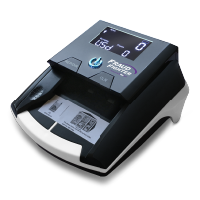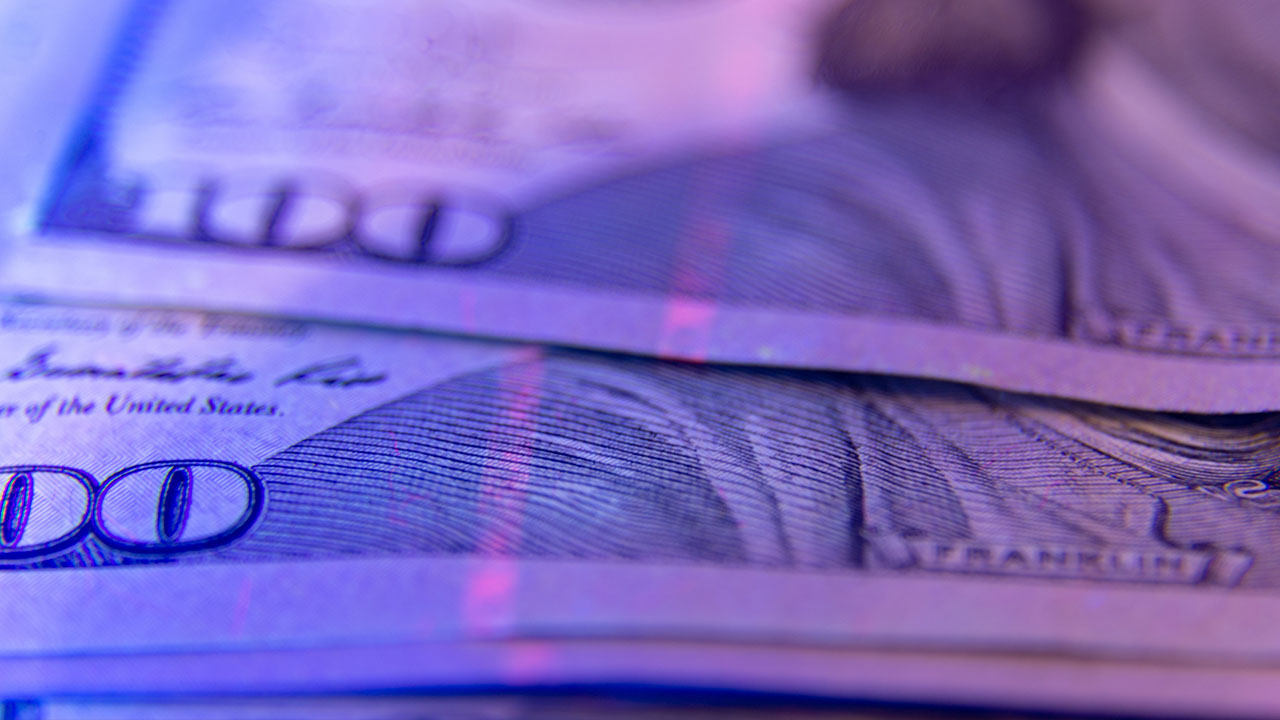There is a surprising range of counterfeit detector options available in the marketplace today. Most counterfeit detectors fall into one of two major categories, UV detection, which are manual and require some user knowledge, and automatic detectors which operate without any experience or knowledge required by the cashier or teller using it.
Which is right for your organization?
The answer depends on what your specific needs are.
UV “Manual” Detectors
Ultraviolet detectors consist of a UV bulb/LED light source that makes “covert” ultra-violet security features fluoresce visibly. These features appear on currency and other secure documents.
UV detectors can be mounted under a shelf, on a wall, behind the counter, or directly at the point of sale, making them ideal for retail establishments. Portable units can be moved from place to place as needed, meaning they are a great choice for large public events, bars, or nightclubs. Manual UV detectors can even take the form of simple penlights, ideal for law enforcement personnel and other on-the-move professionals who need to make quick determinations.
UV detectors have the advantage of being able to verify a wide variety of documents, including:
• Passports
• Drivers’ licenses
• Credit cards

• Birth certificates
• Money orders
• And more
Their lower cost makes them ideal for a wide variety of applications.
Automatic Detectors
On the other hand, automatic detectors are designed specifically to check currency. Bills are fed into the machine, which verifies a variety of security features such as thickness, weight, image quality, and magnetic and infrared indicators.
Automatic detectors are ideal for high volumes of cash, since they can check dozens of bills a minute and even add up the total value of the money counted. They can be configured to test many different types of currency, making them ideal for multinational endeavors, and do not require any employee training on security features. This virtually removes the potential for human error.
In the end, both UV and automatic detectors have a place in the fight against counterfeiting. The right option for your organization will depend on your specific needs.

Model CT600
Pros and Cons
Ultra Violet Detectors
| Pros |
Cons |
| Low Cost |
Requires “subjective” yes/no decision |
| Flexible – works on many documents |
Verifies only a single feature |
| Easy to Implement |
Requires periodic bulb replacement |
| Easy to Train Employees |
|
Automatic Currency Detectors
| Pros |
Cons |
| No User knowledge required – machine does all the work |
Higher prices, relative to UV detectors |
| Many Devices can tally currency totals as authentication occurs |
Verifies only a single type of document (currency) |
| Easy to Implement |
Dirt/grime build up can require maintenance |
| Easy to Train Employees |
IFF new currencies released, software update required |
| Verify multiple physical features – as many as 5 or 6 tests in some cases |
MAY only authenticate one single currency type |
Conclusion
Ultimately, the right choice for your business depends upon your needs. If your primary concern is ONLY currency fraud, then chances are, the best choice is to use an automatic detector. The simple fact that the user doesn’t need to make any decisions is often going to be the point that tips the scales.
However, if you are concerned about other types of counterfeit fraud, such as credit card fraud, or even if you sometimes accept loan applications or new account opening activities, then the flexibility to authenticate additional documents on top of currency might be more important.
Our best advice? Always choose a vendor who can offer you a number of choices so you don’t end up getting shoe-horned into a solution that isn’t right for you.


